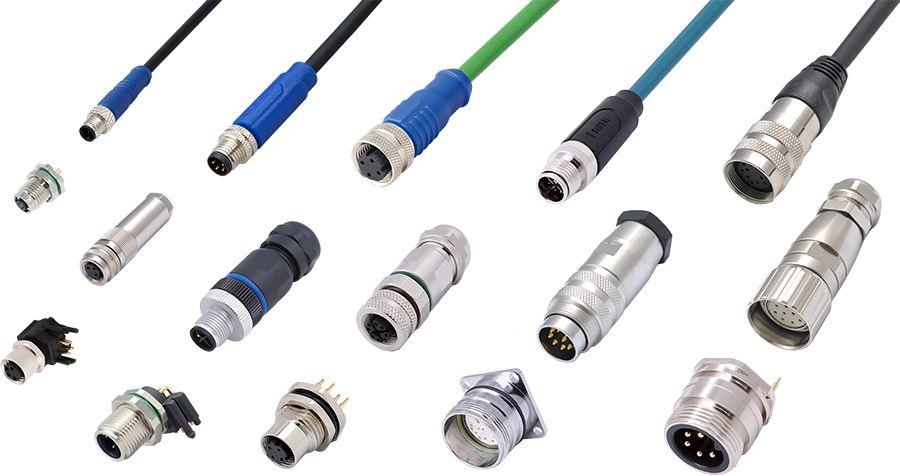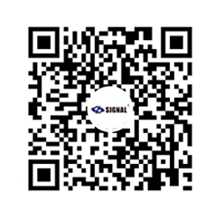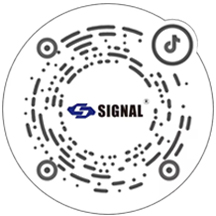Selecting the appropriate M12 connector is essential for ensuring the reliable performance of electronic systems, particularly in industrial environments where durability and precision are paramount. M12 connectors are renowned for their robustness and versatility, making them a popular choice across various applications. To make an informed selection, it's crucial to consider several key factors:
1. Understand the Connector Coding System:
M12 connectors are available in various coding types, each designed for specific applications. Selecting the correct coding ensures compatibility and optimal performance:
· A-Coding: Primarily used for sensors, actuators, DC power, and 1 Gigabit Ethernet applications.
· B-Coding: Commonly employed in Profibus systems for fieldbus connections.
· C-Coding: Designed for AC power applications, such as connections to AC-powered sensors and actuators.
· D-Coding: Suitable for Fast Ethernet (100 Mbps) data transmission, often used in industrial communication systems.
·
· X-Coding: Ideal for high-speed data transmission up to 10 Gbps, supporting demanding data applications.
Understanding these coding types is crucial for ensuring that connectors are used appropriately, preventing mismatches, and maintaining system integrity.
2. Determine the Number of Pins:
Assess the number of signals or power lines your application requires. The pin count directly influences the connector's capacity to handle multiple signals or power connections simultaneously. For example:
· 3-Pin Connectors: Suitable for simple sensor connections requiring a signal and ground.
· 4-Pin Connectors: Ideal for applications needing a signal and power line.
· 8-Pin Connectors: Necessary for high-speed data transmission applications, such as Ethernet connections.
Aligning the pin configuration with your system's requirements is essential for ensuring efficient and reliable connectivity.
3. Consider the Type of Installation:
The installation method of the connector affects its suitability for different applications:
· Panel-Mounted Connectors: Fixed to panels, providing secure and permanent connections, ideal for control panels and machinery.
· Cable-Mounted Connectors: Attached to cables, offering flexibility for connecting devices in various locations, suitable for portable equipment.
· Field-Attachable Connectors: Allow for on-site assembly and customization, beneficial for maintenance and modifications in the field.
Choosing the appropriate mounting style ensures the connector meets the physical and operational demands of your application.

Shenzhen SIGNAL M12 Product Offerings
4. Assess Environmental Conditions:
Consider the environmental factors the connector will be exposed to, such as:
· Exposure to Elements: Rain, dust, chemicals, or extreme temperatures.
· Ingress Protection (IP) Ratings: Connectors are rated for their resistance to dust and water ingress. For instance, an IP67 rating indicates complete protection against dust and the ability to withstand immersion in water up to 1 meter deep.
Selecting connectors with appropriate IP ratings ensures longevity and reliable performance under specific environmental conditions.
5. Choose the Material:
The material of the connector housing and contacts influences durability, conductivity, and resistance to environmental factors:
· Nickel-Plated Brass: Offers a balance between cost and performance, suitable for general applications.
· Stainless Steel: Provides superior resistance to corrosion and harsh chemicals, ideal for demanding environments.
Ensuring the material aligns with your application's environmental and mechanical demands is crucial for maintaining system integrity.
6. Understand Keying Mechanisms:
Beyond coding, M12 connectors feature keying mechanisms that prevent incorrect mating:
· Physical Keying: Connectors are designed with unique shapes or features that ensure only compatible connectors can be mated, preventing misconnection.
· Color Coding: Some connectors feature color-coded components to aid in quick identification and correct pairing.
Familiarity with these keying mechanisms is essential for proper connector selection and to avoid potential system errors.
Conclusion:
Selecting the appropriate M12 connector requires a thorough assessment of your application's electrical, mechanical, and environmental needs. By evaluating factors such as connector coding, pin configuration, installation method, environmental exposure, material composition, and keying mechanisms, you can ensure optimal performance, reliability, and durability of your electronic systems. For tailored guidance and to identify the best connector solutions for your specific requirements, don't hesitate to contact us at <sales@sz-signal.com>. Our team is ready to assist you in making more informed decisions.






